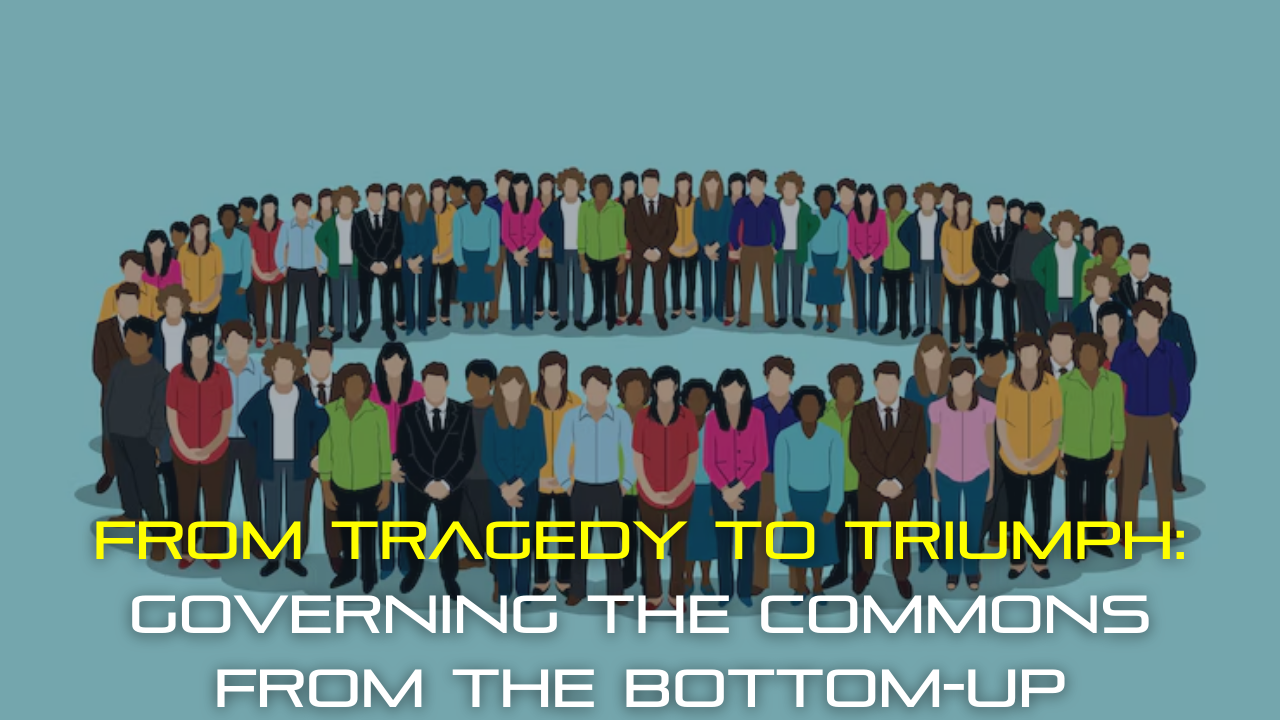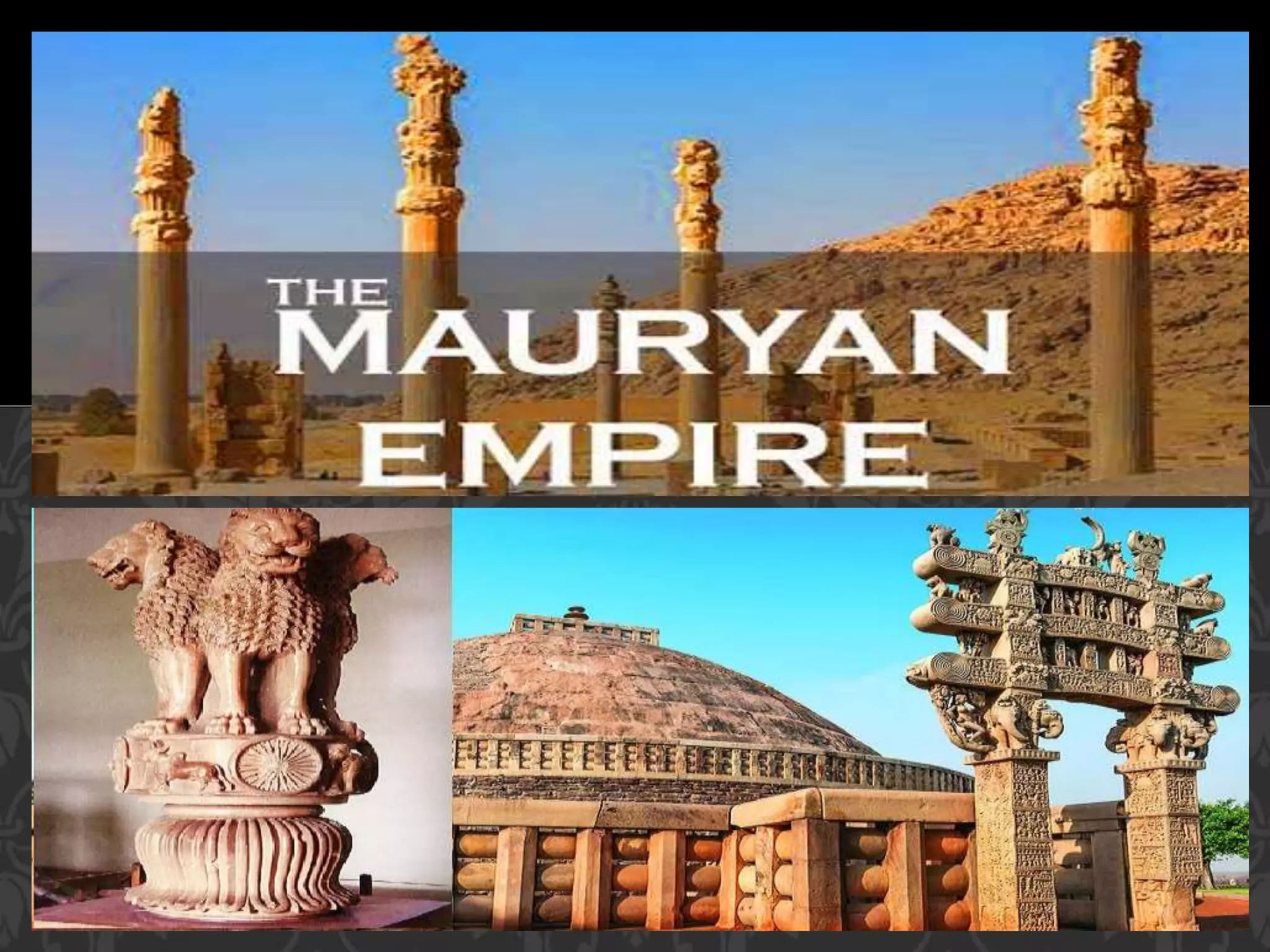From Tragedy to Triumph: Governing the Commons from the Bottom-Up
Inspired by Amitabh Sinha’s article titled “Why Commons Matter, How Community is Key to Their Well-being” in “E. Explained” section of The Indian Express (Monday, September 16, 2024), this essay refers to the “tragedy of the commons” to merely highlight the risk of resource depletion due to self-interest; it, instead, endorses Elinor Ostrom’s research which shows that communities can manage shared resources sustainably through cooperation and bottom-up governance. This essay also explores global and Indian examples, including India’s vast commons, offering insights into successful community-led resource management and policy reforms for sustainable governance.
The concept of the commons refers to resources shared by a community and accessible to all its members. These resources range from natural elements like land, air, and water to social and cultural assets, such as knowledge and public spaces. The idea of the commons has expanded over time to include digital spaces and other shared goods crucial for societal functioning. However, the governance of commons has historically been fraught with challenges, leading to concerns about overuse and depletion—a concept famously referred to as the “tragedy of the commons.” The tragedy of the commons, introduced by Garrett Hardin in 1968, suggests that individuals, acting in their self-interest, will inevitably exploit shared resources, resulting in their destruction. Despite the widespread acceptance of this theory, scholars like Elinor Ostrom have challenged its premise, showing that communities, through cooperation and bottom-up governance, can effectively manage and sustain their commons. This essay explores the evolution from the tragedy to the triumph of governing commons, focusing on successful community-based models and the lessons learned from India’s experience in managing its vast commons.
Understanding the Commons
Commons are resources that benefit everyone and are collectively managed by the communities that rely on them. Donald M. Nonini explains that the commons, ranging from natural resources like land and water to shared knowledge, are essential for human survival and societal well-being. Traditionally, the commons referred to rural resources such as forests and grazing lands, but this idea has since expanded to include urban spaces, digital knowledge, and global commons like the atmosphere.
Elinor Ostrom, a Nobel Prize-winning political scientist, demonstrated that the tragedy of the commons is not inevitable. In her seminal work Governing the Commons, Ostrom provided evidence that communities can effectively govern shared resources through systems of rules and institutions developed from within, rather than imposed from above. Her work counters the notion that only top-down governance by the state or privatization can prevent resource depletion.
The Tragedy of the Commons
Garrett Hardin’s concept of the tragedy of the commons posits that when individuals act solely in their self-interest, they will overuse and deplete shared resources, leading to their eventual collapse. Hardin used the example of communal grazing lands, where each farmer, seeking to maximize personal benefit, adds more livestock, eventually leading to overgrazing and destruction of the land.
While Hardin’s theory highlighted a real concern about the potential for overuse of commons, it failed to account for the capacity of communities to self-organize and govern these resources sustainably. Across the world, communities have developed sophisticated systems of managing commons for generations without the need for external oversight.
Elinor Ostrom and the Triumph of the Commons
Elinor Ostrom’s work provided a powerful rebuttal to Hardin’s theory. Through extensive fieldwork, she demonstrated that communities could, under the right conditions, govern their commons without depleting them. Ostrom’s research highlighted the success of communities that have established systems of rules to regulate resource use, monitor compliance, and resolve conflicts. These systems are often more effective than top-down government interventions, which may be disconnected from the local context.
A critical element in Ostrom’s model is “conditional cooperation”—the idea that individuals are willing to cooperate as long as others do the same. In communities where cooperation is prevalent, resources are often managed sustainably through locally developed rules and enforcement mechanisms. For example, in Ethiopia, forest communities with a higher proportion of conditional cooperators successfully managed their forest commons through collective patrols and resource monitoring.
Bottom-Up Governance in Practice
The core of Ostrom’s argument is that bottom-up governance, where local communities take responsibility for managing their resources, is a highly effective model for sustaining the commons. In bottom-up governance, the people who use and depend on the resources are responsible for creating and enforcing the rules that govern their use. This model relies on trust, cooperation, and local knowledge.
For example, decentralized management of irrigation systems in Nepal, where local farmers were allowed to develop rules suited to their specific needs, proved more effective than government-controlled systems. Such community-based governance allows for greater flexibility and responsiveness, as local actors are better positioned to adapt to the complexities and changes within their environments.
However, bottom-up governance is not without its challenges. Scaling this model to manage larger or global commons, such as climate change or ocean fisheries, requires cooperation on a much larger scale. Nevertheless, the principles of cooperation, trust, and collective action that underpin successful local commons governance can also be applied to these global challenges, provided there is a commitment to fostering collaboration across borders.
The Commons in India: A Critical Resource
India’s commons are an essential part of the rural landscape, providing vital resources and services to millions of people. Comprising approximately 205 million acres of land, India’s commons include community forests, grazing pastures, and water bodies, which serve as a lifeline for around 350 million rural inhabitants. For these communities, the commons offer critical resources like fuelwood, fodder, and water, and serve as a buffer during times of environmental stress, such as droughts. The commons also play an important role in maintaining ecological balance, contributing to water retention, flood control, soil conservation, and biodiversity preservation.
In economic terms, the value generated by India’s commons is significant. These shared resources are estimated to contribute approximately ₹6.6 lakh crore annually to the rural economy through the provision of goods and ecological services. However, the value of the commons goes beyond economics. These resources are deeply embedded in the social and cultural fabric of rural India, offering a strong connection between communities and the land they rely on for sustenance.
Challenges Facing India’s Commons
Despite their importance, India’s commons are under increasing pressure from urbanization, industrialization, and privatization. As more land is diverted for commercial purposes, rural communities are losing access to the commons that have sustained them for generations. Overgrazing, deforestation, and unsustainable extraction practices have further degraded these resources, making it harder for communities to derive their livelihoods from them.
Additionally, many of India’s commons are not formally recognized by legal frameworks, leaving them vulnerable to encroachment by private interests or government projects. Without clear legal protections, communities face difficulties in safeguarding these critical resources. However, there has been a growing recognition of the need to regenerate and conserve India’s commons, and several initiatives have been launched to restore degraded lands and promote sustainable management practices.
The Conference on India’s Commons: A Step Towards Solutions
From 12-14 August in 2024, a national conference on “Regenerating India’s Commons” was held in New Delhi, bringing together policymakers, researchers, community leaders, and environmentalists to discuss the challenges facing India’s commons and explore strategies for their protection and revitalization. The conference highlighted the need for comprehensive policy reforms, community participation, and collaborative efforts to ensure the sustainability of these shared resources.
One of the key themes of the conference was the role of commons in climate resilience. As climate change impacts rainfall patterns, agriculture, and ecosystems across India, the commons are becoming increasingly important as buffers against environmental shocks. They provide vital services such as water recharge, flood mitigation, and drought resilience—services that are particularly crucial for rural areas vulnerable to climate-induced disasters.
Case studies presented at the conference demonstrated the success of community-led initiatives in managing and regenerating commons. One such example from Rajasthan showcased how local communities had restored traditional water bodies known as johads, small earthen dams used for water harvesting. These efforts helped recharge groundwater, rejuvenated local agriculture, and improved livelihoods in water-scarce regions.
Policy Recommendations for India’s Commons
The conference led to several important policy recommendations aimed at improving the governance of India’s commons. First, there was a call for legal recognition and protection of commons, to give communities the power to manage and sustainably use these resources. Second, the conference emphasized the need for community-based governance models, inspired by successful examples of local resource management. These models would allow communities to take ownership of decision-making processes, supported by state institutions to enforce sustainable practices.
Furthermore, large-scale restoration and regeneration programs were recommended to revive degraded commons. This includes reforestation efforts, soil conservation, and the restoration of traditional water systems. The participants also stressed the importance of integrating commons management into India’s broader climate adaptation strategies. Lastly, inclusive development policies were urged, ensuring that marginalized groups, including women and smallholder farmers, benefit from the protection and sustainable management of commons.
Conclusion: From Tragedy to Triumph
The tragedy of the commons is not an inevitable outcome. As Elinor Ostrom’s research and India’s experience have shown, communities have the capacity to manage their commons sustainably through cooperation and bottom-up governance. By empowering local communities, fostering trust, and supporting decentralized decision-making, we can move from tragedy to triumph in the governance of shared resources.
India’s commons, which provide vital resources and ecological services to millions of people, are under threat from commercialization and environmental degradation. However, through collective action, policy reforms, and community-led initiatives, there is hope for regenerating these critical resources and ensuring their long-term sustainability. The success of India’s commons will depend on the collaboration between communities, governments, and civil society, working together to protect these vital shared assets for future generations.



